
The issue of rural depopulation has been extensively studied in the last few decades. There are many large areas in Spain that have fewer inhabitants than Sápmi itself. Although the absence of people is a problem, these villages are still standing and are an example of perseverance. Besides, they hold many treasures that should not be forgotten. These are the smallest villages in Spain and have a great history.
No matter how large or tiny a village is or how many people used to live in it in the past. These are the current smallest villages in Spain, those that have fewer neighbours in the country, according to the National Statistics Institute of Spain. Let’s see 10 villages that are on the verge of extinction, starting with the one with more inhabitants.
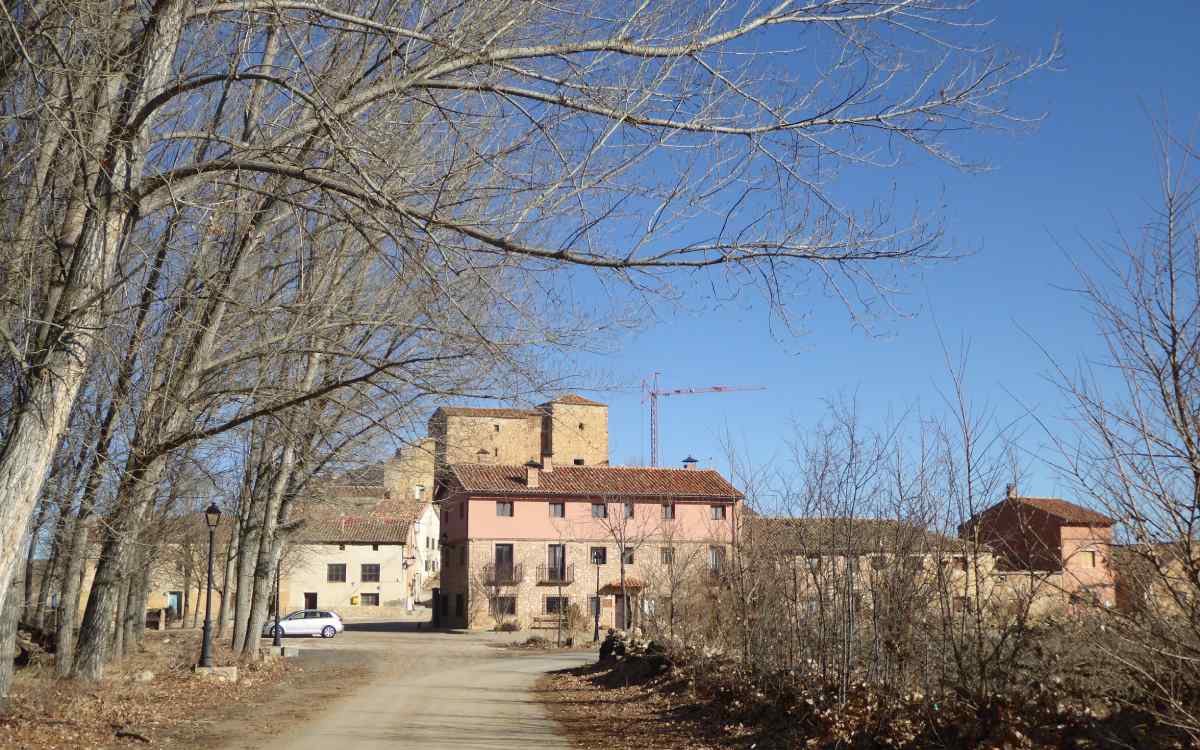
Castilnuevo. | Millars, Wikimedia
This tiny municipality was built around the Castilnuevo Castle, an interesting fortressed house that is still preserved. The growth led to the construction of the other gem of this village in the 12th century, the Virgen del Valle Church. But in the last decades, its population hasn’t grown at all, and it is composed of only 8 people. It sits near Molina de Aragón, on Guadalajara’s east, and it is crossed by the GR-160 path, known as the Camino del Cid.
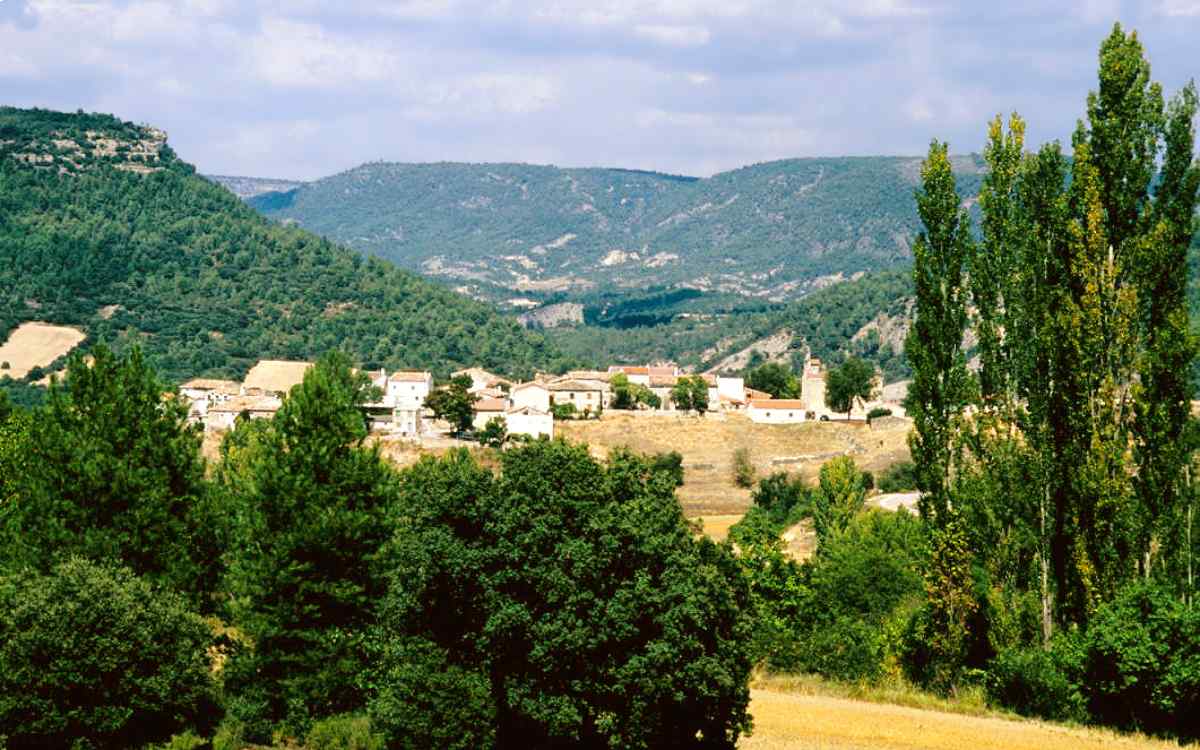
Valtablado del Río. | LBM1948, Wikimedia
Valtablado del Río sits in Guadalajara and belongs to the Alto Tajo Natural Park, a wonder of forests, water, and orography. Although 100 people lived here in the 19th century, there are only 8 now. In the last 30 years, its population has remained under 20 people.

Navajún pyrite. | Shutterstock
Navajún sits in the Cervera del Río Alhama comarca of La Rioja, in a mountainous area near the frontier with Soria. Tiny pieces of Navajún have literally crossed barriers to reach places such as the Natural History Museum in London, since this small village is very popular thanks to its pyrite mines, which were exploited to obtain this ornamental mineral. However, the main economic activity in this area has relied on wool cattle in the last few years.
Ver esta publicación en Instagram
Torremontalbo is also in La Rioja, near Logroño and plenty of renowned wine villages like Briones. Actually, vines are its main crop. This village’s distinguished past can be perceived in the abundance of palaces and manor houses in the area. Despite all of this, survival is a considerable challenge now.
Ver esta publicación en Instagram
Valdeprado awaits you near Navajún, on the side of the frontier that belongs to Soria. This minuscule municipality of only 8 inhabitants offers fascinating views and landscapes that can’t be found anywhere else. In fact, there is an even smaller municipality in Valdeprado, which is even smaller. Its name is Castillejo de San Pedro, and it sits on the foothills of the Sierra de Cabezas.
Now its wheat mills aren’t used anymore, but this place was home to more than 400 people only a century ago. The Tierras Altas of Soria only have 2 inhabitants per square kilometre, thus being one of the less populated places in Spain.
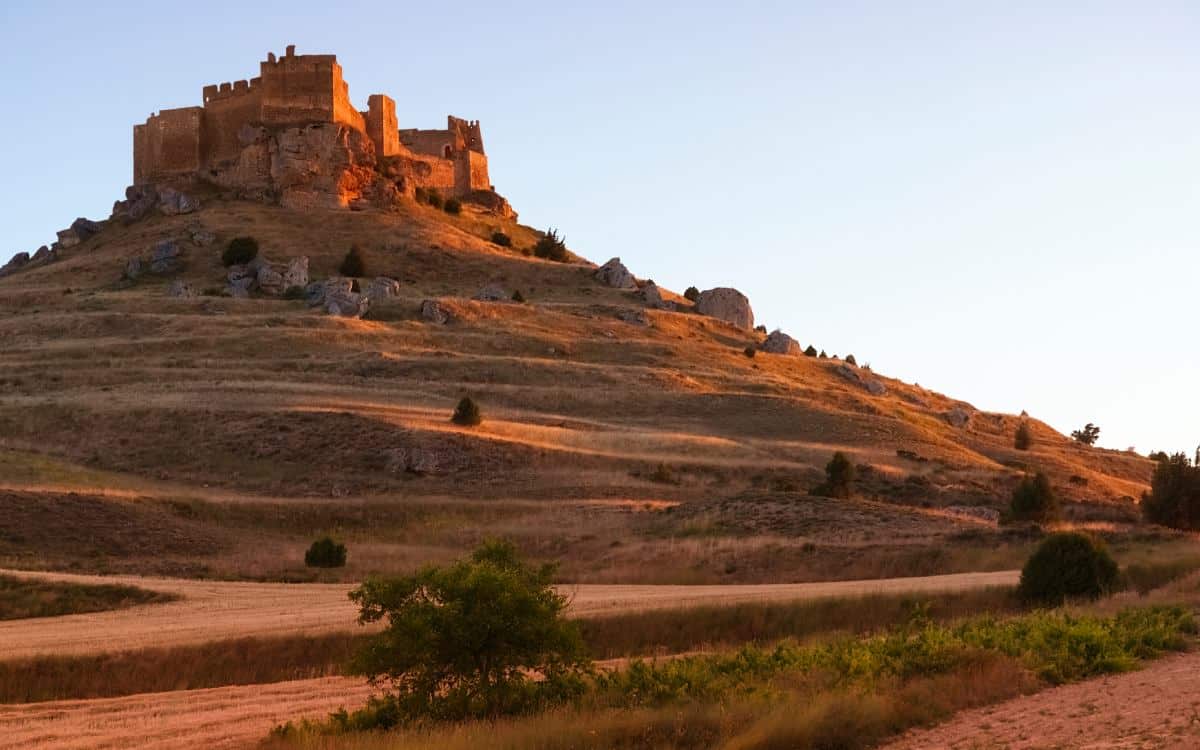
Gormaz Castle. | Shutterstock
The Comunidad de Villa y Tierra de Gormaz is an epic land that used to serve as a frontier between Christian kingdoms and Islamic domains. At least, according to the atalayas or watchtowers that remain from that era, or the Gormaz Castle, a fascinating Caliphate fortress. Villanueva de Gormaz hasn’t had more than 10 inhabitants for years. There are only 8 now. It used to work in the wine industry, a past you can learn about thanks to its lagares and subterranean wine cellars.
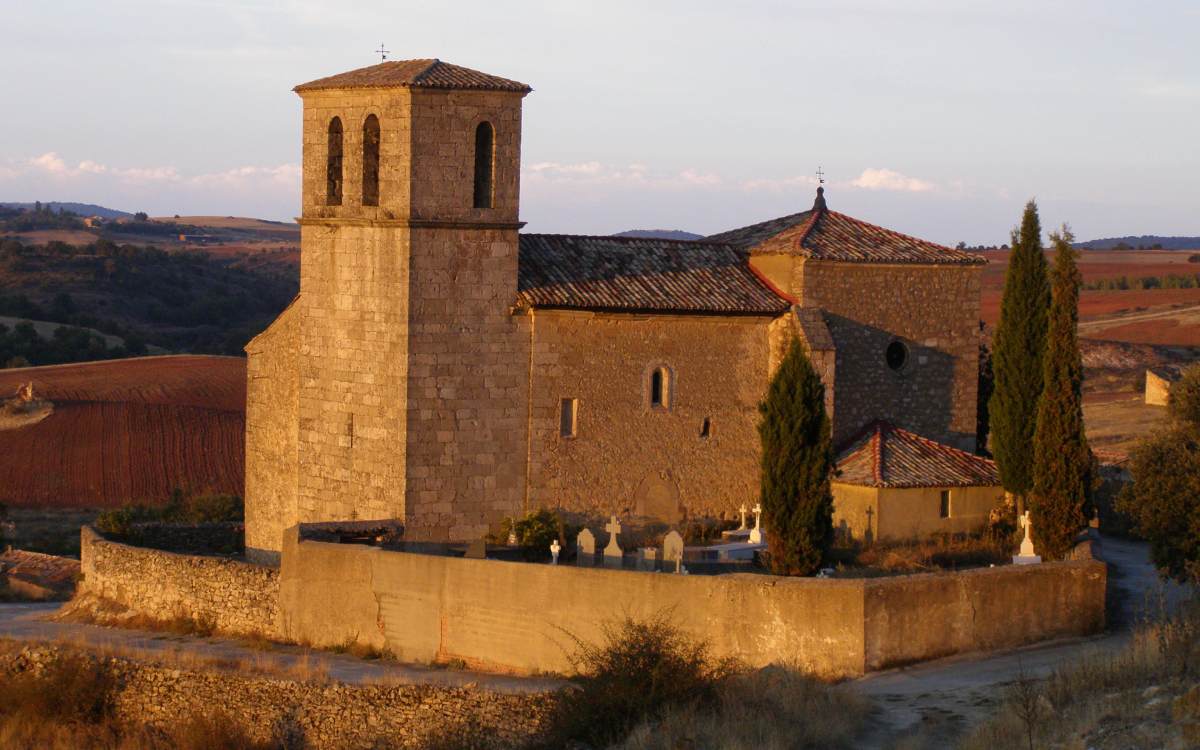
Santa Catalina Church in Angón. | Erevilla14, Wikimedia
Back in Guadalajara, we find Angón. The 7 people who live here enjoy a breathtaking natural landscape, which makes this village an attractive destination for rural tourism lovers. Its surroundings are perfect to watch the stream from the hill or go on lovely excursions to the old volcanoes of La Miñosa, the fluvial reservoir of the Pelagallinas River, or the Barranco del Río Dulce Natural Park. You can also explore the nearby and impressive Sigüenza.
Ver esta publicación en Instagram
Torremochuela is another municipality in the province of Guadalajara that is fighting to flourish. These days, only 6 people live here. Its name, like many others in the area, refers to the defensive bastions from the moment when Molina de Aragón was being repopulated.
Castilnuevo also belongs to this comarca, which is one of the most affected by depopulation, in spite of the many charms it holds, both historical and natural. Many villages like Torremochuela await to be rediscovered. A walk through its juniper forests, the harvesting of mushrooms, or a snowy getaway are some of its many attractions.
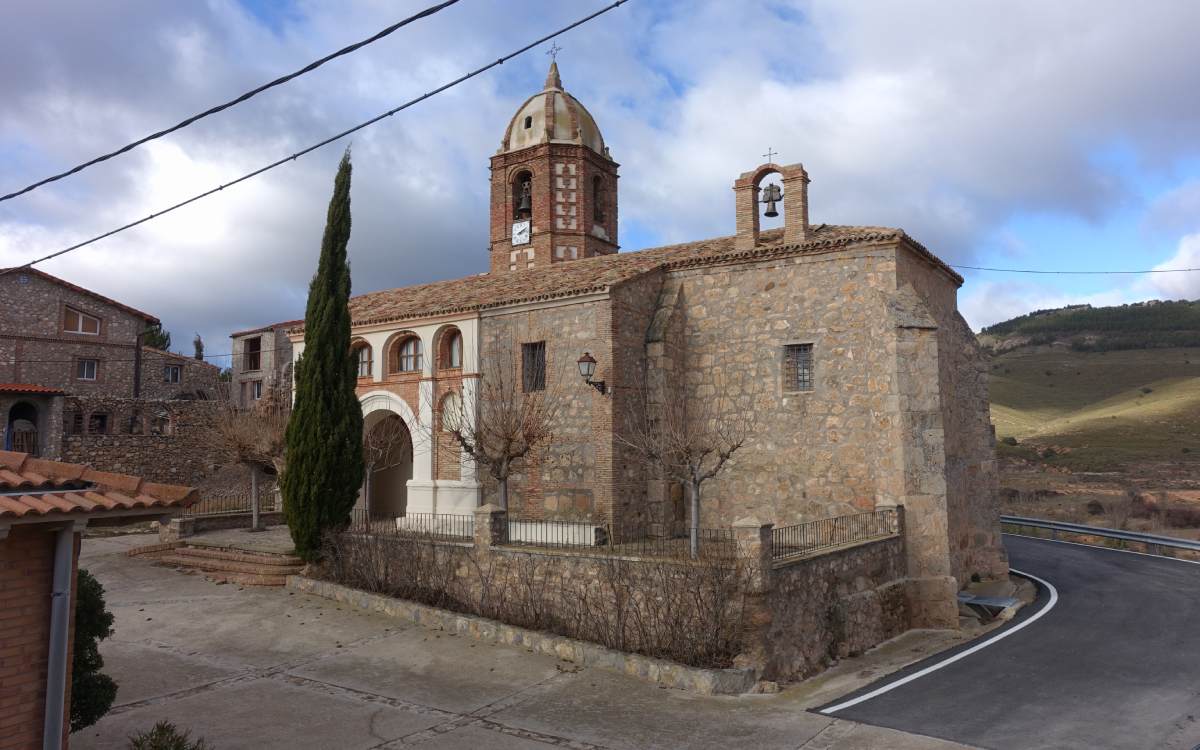
Villarroya. | Rodelar, Wikimedia
Near Arnedo, in the southeastern part of La Rioja, lies a village that used to hold great fame due to its coal mines and large archaeological excavations that brought light to the Pleistocene. Only 4 people live here now.
The coal mines were closed in 1967, and that was the beginning of the end. However, it is possible to enjoy many hiking routes such as the ruta de las abejeras and the ruta de los corrales, among others. You should also take some pictures of its San Juan Bautista Church. This village is extremely famous for being the fastest place to vote.
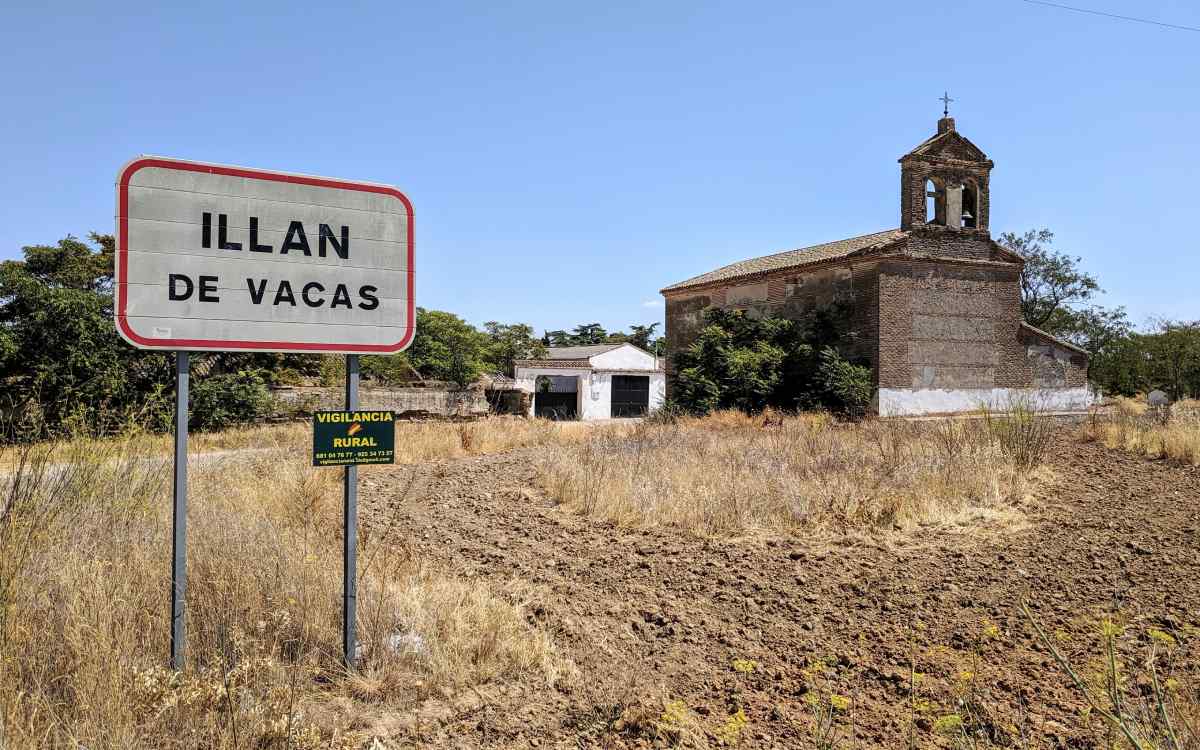
Illán de Vacas. | Rodelar, Wikimedia
Illán de Vacas has gained popularity in recent years thanks to its bittersweet record of being the least populated village in Spain. Only 3 people live here. It can be found in Toledo. Its name references the cultural variety of these lands by merging a Latin name and an Arab name.
Although it was home to more than 200 inhabitants in certain eras of the 19th century, Illán de Vacas was depopulated in 1991. Since then, it has remained a demographic curiosity. The disappearance of its Mudéjar-style train station had something to do with it. None of its remains are to be found. To walk through its unpaved main street is to explore the epicentre of the España vaciada, or ‘empty Spain’. A bittersweet experience that allows to reflect on the situation of all these villages that keep fighting abandonment.